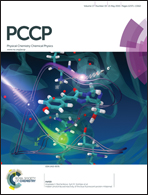Using lithium carbonate-based electron injection structures in high-performance inverted organic light-emitting diodes
Abstract
A lithium carbonate-based bi-layered electron injection layer was introduced into inverted organic light-emitting diodes (OLEDs) to reduce operation voltages and achieve carrier balance. Ultraviolet photoemission spectroscopy was used to confirm the existence of an interfacial dipole between the organic and lithium carbonate layers, which is a dominating factor related to the device performance. The respective maximum efficiencies of 15.9%, 16.9%, and 8.4% were achieved for blue, green, and red phosphorescent inverted OLEDs with identical architectures, indicating that carrier balance was easily obtained. Moreover, adoption of this sophisticated electron injection layer design resulted in respective turn on voltages of only 3.4 V, 3.2 V, and 3.2 V. Furthermore, the inverted OLEDs equipped with silicon dioxide nanoparticle based light-extraction films achieved an approximately 1.3 fold efficiency improvement over pristine devices due to the low refractive index of the silicon dioxide nanoparticles along with an effective scattering function. The blue, green, and red inverted OLEDs with the nanocomposite layer achieved respective peak efficiencies of 20.9%, 21.3%, and 10.1%.


 Please wait while we load your content...
Please wait while we load your content...